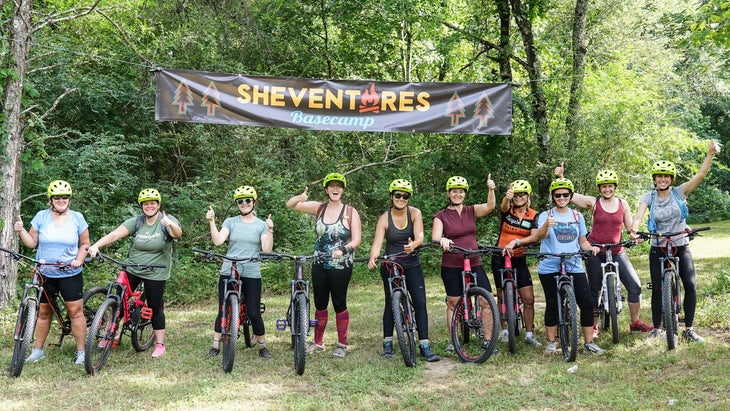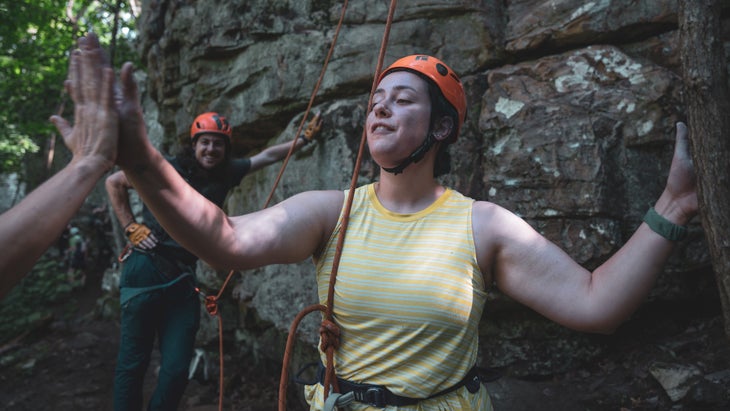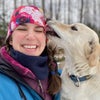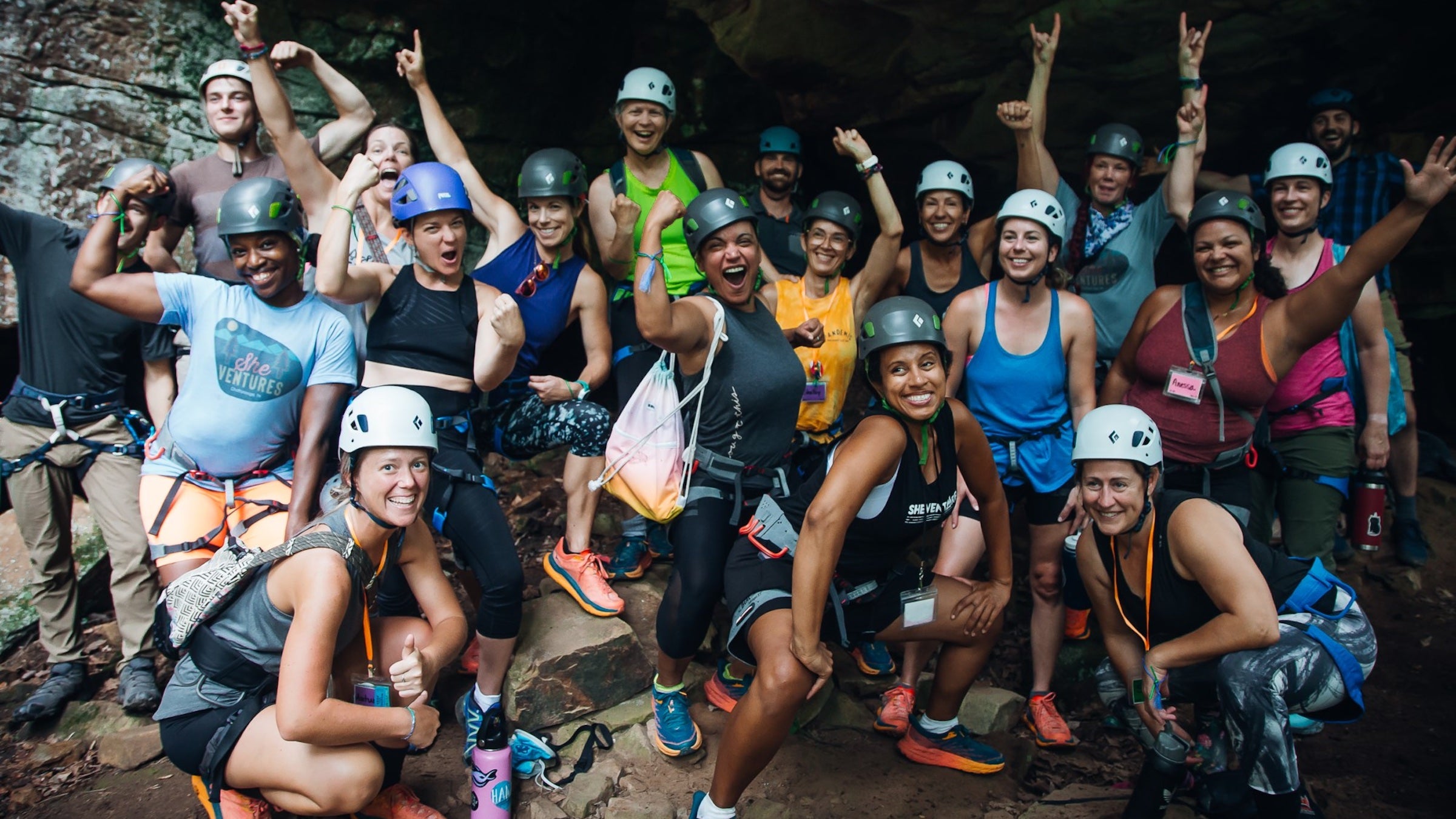In February, I joined four strangers on an overnight dogsled expedition for beginners. They ranged in age from their twenties to sixties, and sat long hours around the campfire—laughing, roasting marshmallows for each other, and petting a yellow dog who squeezed along the snowbanks behind them, nosing for snacks. Each attendee had signed up for the trip alone; they’d never met each other before. But the mood—and the conversation—couldn’t have been better. If you’d told me right then, sitting around the fire, that we’d be extending the expedition for a month, I would have looked at my companions’ eyes sparkling in the firelight and thought: Yes. Bring it on.
Recently The Atlantic published a , which is caused—in part—by what we might call an epidemic of individualism: our own ongoing choices to stay siloed in tiny worlds. We work from home; we eat at home; we stream instead of going to the movies—and the problem, as diagnosed in The Atlantic, isn’t so much that we’re lonely as that we’re not. We’re alone by choice, and we’re OK with it, in part because of the ways that technology intrudes on what used to be solo time. Let’s say you choose to take a quiet evening to recharge. But your phone’s lighting up constantly, and you owe so-and-so a text and so-and-so an email, and you should probably check socials just to see what disasters are happening in the news… and by the end of the night, you haven’t spent quality time with other people or yourself. So you’re hungry for quiet, and stay home the next night and do the same, with the same result. As author Annie Dillard says, how we spend our days is how we spend our lives—and a life of neither solitude nor companionship can leave us feeling consistently wrong.
The article strikes me partially as hand-wringing (I’m rarely compelled by arguments that other people are choosing to live their personal lives wrong) and partially as terrifying (it’s easier to hate people for their differences if you rarely encounter them). But I also wrote an outdoors advice column for almost a decade, long enough to notice deep grooves of recurring themes in the questions that readers sent in. Many readers’ problems were steeped, above all, not in solitude but in true loneliness; the theme came up so often that it was sometimes difficult to find questions to answer that weren’t about being alone. People struggled to make friends as adults, or after a move to a new location; they mourned when relationships drifted apart, and weren’t sure how to fill the gap. And yes, when you’re a hammer—or an outdoors columnist—everything looks like a nail, but it’s hard to ignore the degree to which time outdoors can heal these ills, at least when it comes to the particular forms they take in modern life.
When we go outside with someone, whether that means joining a meetup or organizing a trip with friends, we’re committing to spending time together in bulk: a two-night camping trip with a buddy means logging as many waking hours together as two years’ worth of monthly coffee dates. Researchers have found that the closeness of a friendship can, : that it takes roughly 50 hours to build a casual friendship, versus 200 to be in someone’s inner circle, and that involved locking male strangers in a room together for ten days resulted in the men becoming, well, basically besties. If you’ve spent any amount of time traveling or hiking with strangers—or even sitting around a campfire—and experienced the intense bond that results, then this degree of rapid closeness may not surprise you at all.

I spoke to Jenny Baker, the founder of Sheventures, an outdoors camp for women in Tennessee, about how her campers make friends. She tries to make sure that 35 percent of the slots at each camp are saved for people who don’t know anyone else, so that they can meet and connect with one another. The strategy is so effective that now, nine years on, it can be hard for her to find enough solo travelers: previous years’ campers are now friends with each other, and choose to return together as a group.
“If we want to combat loneliness,” Jenny told me, “we can’t just find the places where people are connecting. We have to build those places intentionally. How do we ease the hurdles that people encounter when they’re making new outdoor friends? How do we make space for deep connection?”

Jenny’s found that not all outdoor activities are created equal when it comes to making friends. Paddleboarding and mountain biking require too much solitary focus, even when a group does them together. “Hiking is great for introverts,” she told me, “because you don’t have to make eye contact while you’re talking.” But the best activity she’s seen for building friendships, by far, is rock climbing. “You’d think it’s a solo sport, but it’s not. At camp, we might have three women on the wall and 20 women on the ground cheering for them. A climber might be scared. Maybe she’s tried for the next hold a few times, and keeps missing it. As women, we try not to take up space, so she’ll say she’s done and someone else should go. But the women on the ground will literally not let her off the wall. They’re calling out, helping her. They’re completely invested. And when she succeeds, the cheering that erupts in the woods is incredible. It’s like everyone succeeded together.”
But what about after camp? How can people keep those intense bonds from drifting apart?
It turns out that the science of friendship can guide us here, too. For one thing, it’s OK for friendships to drift apart; we benefit from companionship at any level, and just because a friendship is short-lived doesn’t mean that it’s not important, or that it won’t be rekindled later. But if you find yourself making an outdoor friend that you really want to hold onto, just remember to do the opposite of what every true crime podcast tells you and go to a second location. Going from the trail to the pub, or making plans to meet up after camp, helps you to see each other in a different light, and also lets your new pal know that you care about them beyond convenience. And that choice–that intention–can make all the difference between an outdoor friend and a friend for good.


